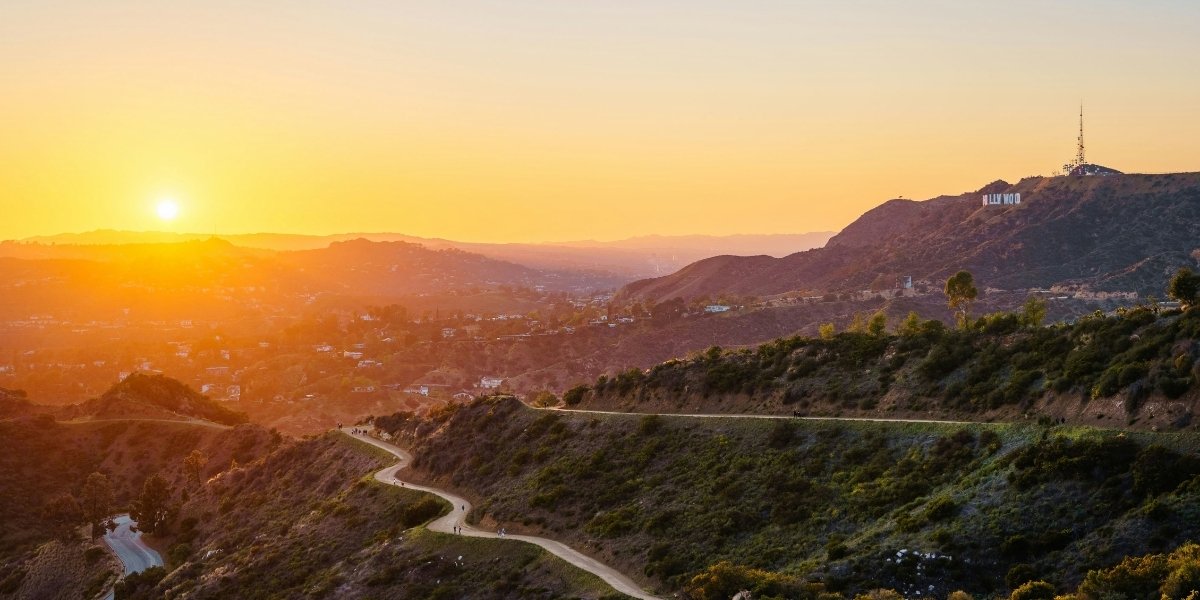Los Angeles stands today as a sprawling, vibrant metropolis, recognized worldwide for its entertainment, innovation, and diverse communities. It can be surprising to consider that this urban center began as a modest settlement, a small pueblo founded centuries ago. Tracing the city’s origins reveals a fascinating story of ambition, resourcefulness, and a series of transformations that propelled it from a quiet outpost to the influential global city it is today, a journey marked by distinct historical periods.
Read also: Los Angeles as a Walkable City: Surprising Pedestrian-Friendly Areas
Spanish Roots and Mexican Heritage

The story of Los Angeles truly begins in 1781 with its founding by Spanish governor Felipe de Neve. Called “El Pueblo de Nuestra Señora la Reina de los Ángeles de Porciúncula” (The Town of Our Lady the Queen of the Angels of Porciúncula), it was established as an agricultural community, envisioned to provide food and support for nearby missions and military outposts. Life in this nascent pueblo was initially quite slow-paced and centered around subsistence farming and ranching under Spanish colonial rule. Early settlers, a mix of Native American, Spanish, and African heritage, built adobe homes and carved out a life that was largely self-sufficient, with limited contact with the outside world.
When Mexico gained independence from Spain in 1821, Los Angeles transitioned to Mexican governance, bringing about significant changes. During this period, the vast mission lands that had dominated California were secularized, meaning they were broken up and distributed, leading to the rise of enormous ranchos. These large land grants became the primary economic backbone of the region, focusing heavily on cattle raising for hides and tallow. This era gave rise to the distinct Californio culture, a unique identity that blended Spanish traditions with the local landscape and Native American influences. Vaqueros, the skilled horsemen who managed the herds, became iconic figures of this time, and social life often revolved around large, celebratory fiestas on these sprawling rancho properties.
Through these years, Los Angeles slowly expanded its reach and influence, still relatively small but steadily growing as a quiet agricultural and ranching center. By the mid-19th century, this settlement had established a strong local character and a foundation rooted in its Spanish and Mexican past, poised for the transformative changes that lay ahead with the shifting political landscape.
American Annexation and the Gold Rush Influence
A significant turning point for Los Angeles arrived with the Mexican-American War. Following the Treaty of Guadalupe Hidalgo in 1848, California became a U.S. territory, and then a state in 1850. This marked a shift in governance and opened the doors for new waves of settlers. While Los Angeles was not directly involved in the frantic gold strikes that swept through Northern California, the Gold Rush had a profound, if indirect, impact on its early growth. The city quickly established itself as a vital supply hub for miners and settlers moving through the region, providing essential food, horses, and other goods for those making their way north.
Many individuals who sought their fortune in the goldfields but did not find it eventually looked southward, drawn by Los Angeles’s more stable agricultural prospects and its mild climate. The region’s fertile lands allowed for the rapid development of its agricultural potential, particularly with citrus groves thriving, which served as a reliable source of sustenance for the booming population of the entire state, including the gold-mining areas. This agricultural prosperity brought new residents seeking steady work and a different kind of opportunity than the volatile pursuit of gold.
The true catalyst for a large population surge, however, came with the arrival of the transcontinental railroads later in the 19th century. Fierce competition between railroad companies led to rate wars, which in turn sparked massive land booms in Southern California during the 1880s. These speculative periods made land in Los Angeles more affordable and attractive, drawing thousands of migrants directly from the East and Midwest. These new transportation links and the promise of a pleasant climate attracted a substantial number of people seeking a fresh start, firmly setting Los Angeles on its path from a modest settlement to a rapidly expanding urban center.
Water, Oil, and the Hollywood Boom
The early 20th century saw Los Angeles enter a period of explosive growth, driven by key resources and emerging industries that reshaped its destiny. An important part of this transformation was the quest for water, an essential factor for any substantial expansion in the arid Southern California region. The construction of the significant Owens Valley Aqueduct, completed in 1913, was an engineering achievement for its time. It brought a massive and reliable water supply from hundreds of miles away to the parched Los Angeles basin, essentially securing the city’s future. This vast water resource allowed for widespread agricultural development, transforming dry land into fertile fields, and strongly supported the rapid population explosion that followed, making large-scale urbanization truly possible. The acquisition and delivery of this water was a complex and often dramatic process, but its impact on Los Angeles’s ability to grow was very clear.
Around the same time, significant oil discoveries transformed the local economy. The region experienced a massive drilling boom, particularly in areas like Signal Hill and along the coast, quickly making Los Angeles a major oil-producing region, at one point accounting for a substantial portion of the world’s oil output. This influx of wealth and opportunity attracted further investment and a large population seeking work in the burgeoning energy industry. Coinciding with these developments was the rapid rise of the film industry in Hollywood. Independent filmmakers, seeking diverse scenery, consistent sunlight for outdoor shooting, and less restrictive conditions away from East Coast patent disputes, flocked to the area. This influx of creative talent and capital created a new economic powerhouse, drawing not just artists and innovators, but also a wide array of workers from across the country and the world, all contributing to Los Angeles’s distinct identity and its rapid evolution into a global center.
Read also: The Haunted History of the Hollywood Sign
Mid-Century Expansion and Modern LA
The period following World War II brought another wave of expansion, as Los Angeles solidified its status as a major global city. The city saw extensive suburbanization, fueled by the proliferation of automobiles and the development of its vast freeway system. Industries beyond film, such as aerospace and technology, grew significantly, diversifying the economic base. Los Angeles continued to welcome people from all corners of the globe, solidifying its identity as a truly multicultural hub. Hosting the Olympic Games solidified its place on the international stage. The journey from its humble pueblo origins to the dynamic, influential metropolis of today showcases Los Angeles’s remarkable capacity for reinvention and adaptation, a city that continues to evolve with a vibrant blend of historical depth and modern innovation.





